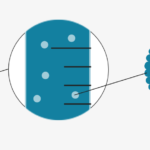By James Gallagher
Health and science correspondent of BBC
Hopes are rising that an effective vaccine against Covid-19 will be available within the next year.
Preliminary findings show a vaccine developed by Pfizer and BioNTech can prevent more than 90% of people from getting Covid-19. Meanwhile results from other advanced trials are expected soon.
Why do we need a vaccine?
If you want your life to get back to normal, then we need a vaccine.
Even now, the vast majority of people are still vulnerable to a coronavirus infection. It is only the restrictions on our lives that are preventing more people from dying.
But vaccines safely teach our bodies to fight the infection. This can either stop us catching coronavirus in the first place or at least make Covid less deadly.
The vaccine, alongside better treatments, is “the” exit strategy.
Which vaccines look most likely to succeed?
Pfizer/BioNtech is the first pharmaceutical company to share data from the final stages of testing – known as a phase 3 trial.
This is a crucial point in vaccine development, where some experimental vaccines will fail.
About 43,000 people have been given the vaccine, and no safety concerns have been raised.
Trial results are also due in the next few weeks on a vaccine being developed by British drug manufacturer AstraZeneca and scientists at the University of Oxford.
Meanwhile encouraging data on a Russian vaccine called Sputnik V has also been released.
Based on interim results from a phase 3 trial, the same stage reached by the Pfizer jab, Russian researchers report that it is 92% efficient.
What other vaccines are being developed?
More results from other teams working on advanced trials are also expected in the coming weeks and months.
There are several other vaccines in the final stage of testing, including Moderna in the US, Wuhan Institute of Biological Products and Sinopharm in China, and Gamaleya Research Institute in Russia.
However, a trial in Brazil for a drug developed by the Chinese firm Sinovac has been suspended after what was described as a “severe adverse incident” – believed to be the death of a volunteer.
How different are the vaccines underdevelopment?
The point of a vaccine is to harmlessly expose parts of the virus to the immune system, which then recognises it as an invader and learns how to fight it.
There are many ways to do this and researchers are using different approaches.
Pfizer/BioNtech (and Moderna) have developed what’s known as an RNA vaccine. This uses an experimental approach, which involves injecting part of the virus’s genetic code into the body, in order to train the immune system.
Once inside the body, this starts making viral proteins to train the body. This is a completely new technique.
The Oxford and Russian vaccines take a harmless virus that infects chimpanzees, and genetically modify it to resemble coronavirus, in the hope of getting a response.
Two of the big China-made vaccines use the original virus but in a disabled form, so it cannot cause an infection.
Understanding which method produces the best results will be vital. Challenge trials, in which people are deliberately infected, could help answer these questions.
When will a vaccine become available?
Pfizer believes it will be able to supply 50 million doses by the end of this year, and about 1.3 billion by the end of 2021.
The UK should get 10 million doses by the end of 2020, with a further 30 million doses already ordered.
Astra Zeneca/Oxford has agreed to supply 100 million doses of its vaccine to the UK alone and possibly two billion globally – should it prove successful.
Who will get the vaccine first?
Exactly who will be immunised first will depend on where Covid is spreading when the vaccine becomes available and in which groups it is most effective.
Older care home residents and care home staff are top of the UK’s preliminary priority list. They are followed by health workers such as hospital staff and the over 80s.
Age is, by far, the biggest risk factor for Covid, so the older you are, the sooner you are likely to be vaccinated.
What still needs to be done?
- Trials need to show the vaccine is safe – it would not be useful if it caused more problems than the disease
- Clinical trials need to show vaccines either stop people getting sick or at least reduce the number who die
- A way of producing the vaccine on a huge scale must be developed for the billions of potential doses
- Regulators must approve the vaccine before it can be given
It is thought that 60-70% of the global population need to be immune to the virus in order to stop it spreading easily (known as herd immunity) – in other words, billions of people, even if the vaccine works perfectly.
Photo by Bill Oxford on Unsplash




